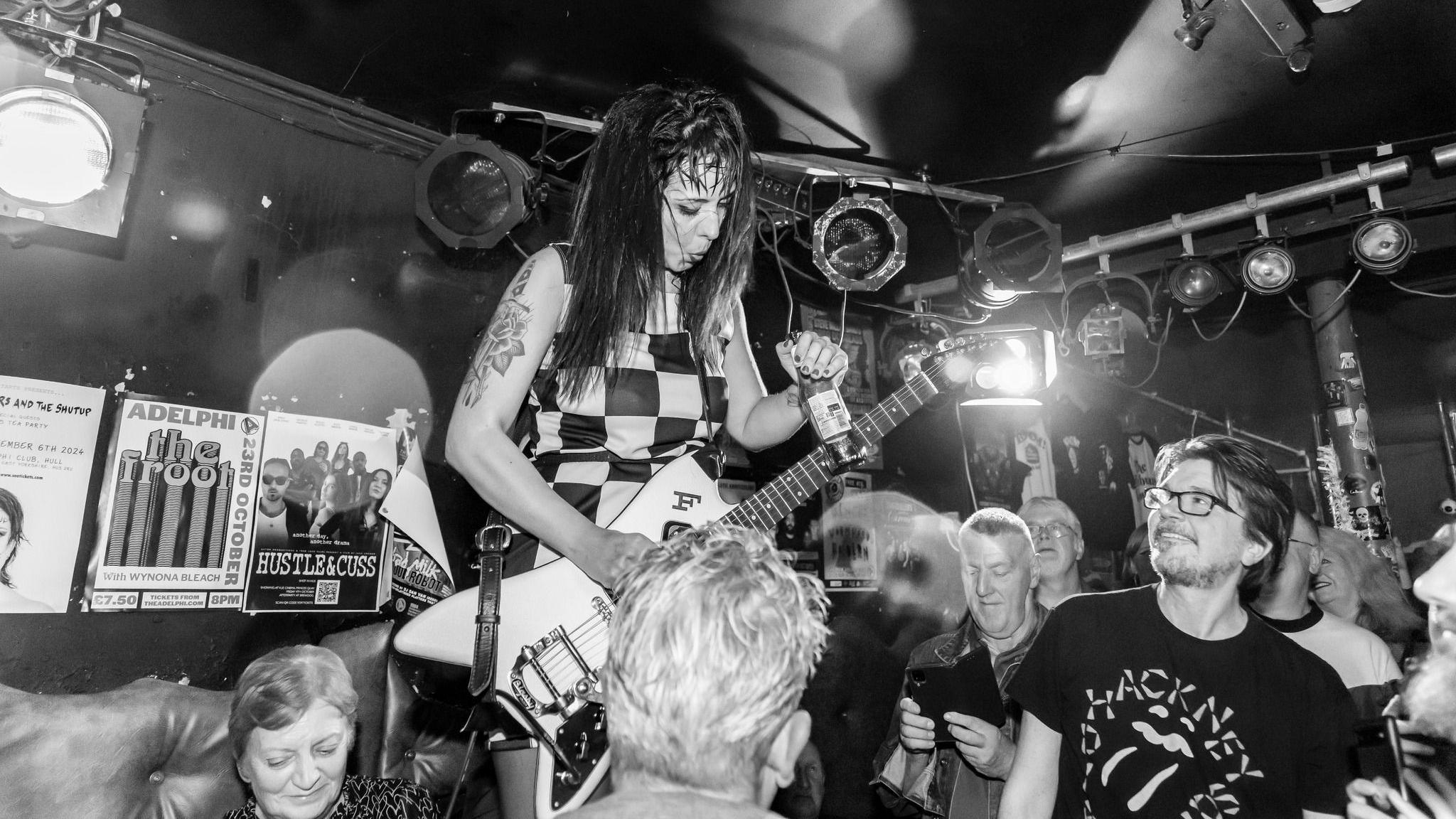'It's as vital to music as McCartney's first home'
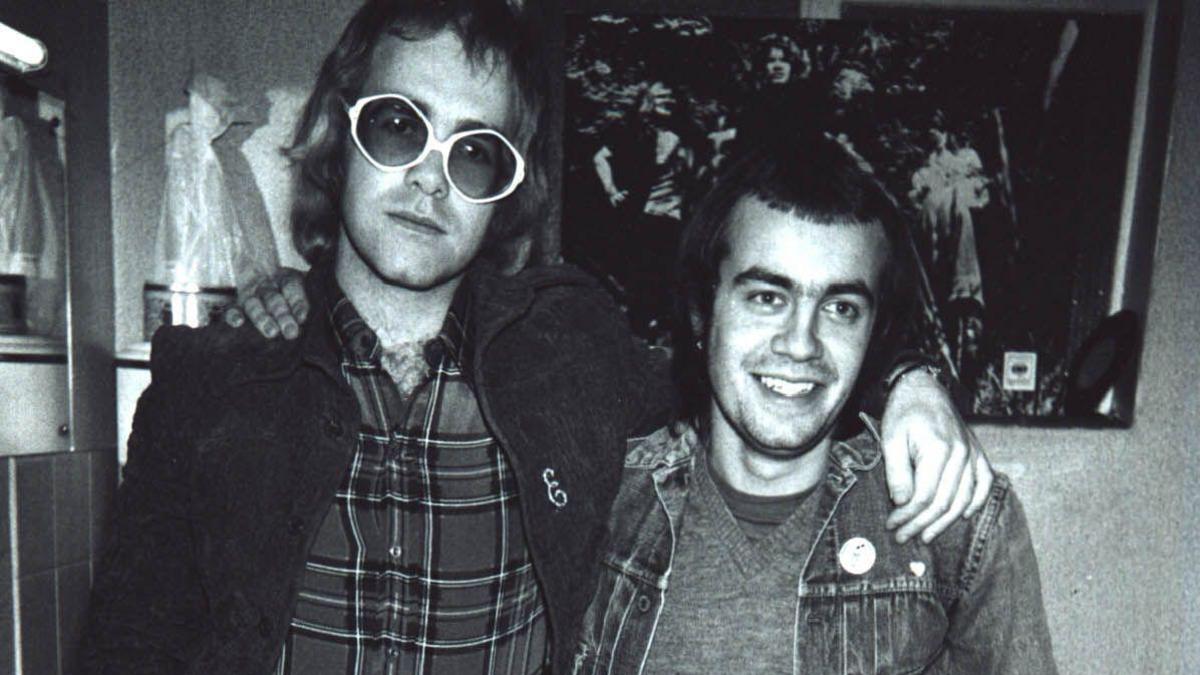
Elton John and his Lincolnshire-born songwriter Bernie Taupin visited the Gliderdrome in 1973
- Published
Boston's Gliderdrome has hosted some of the biggest names in rock 'n' roll. Despite its rich history, its future is far from certain. BBC News went along to find out more.
In the rabbit warren of hallways and backrooms at Boston's Gliderdrome, old posters and photographs of stars still adorn the walls; the paper and paint now peeling.
Jimi Hendrix, Rod Stewart, Elton John, ELO, The Kinks, The Animals, The Drifters, Lulu, Tom Jones, The Who and Status Quo are just a few of the icons who graced the stage here.
However, as it marks its 60th year, the venue's owner warns it could be its last.
We are being shown around the dressing rooms and private bar.
Andrew Malkinson, whose family has owned the building since the 1930s, tells me some fixtures and fittings have not changed since Otis Redding's dulcet tones were heard in the Swinging Sixties.
"It's a very, very tired old building and we're trying so hard to keep it going but it's not easy," he admits.
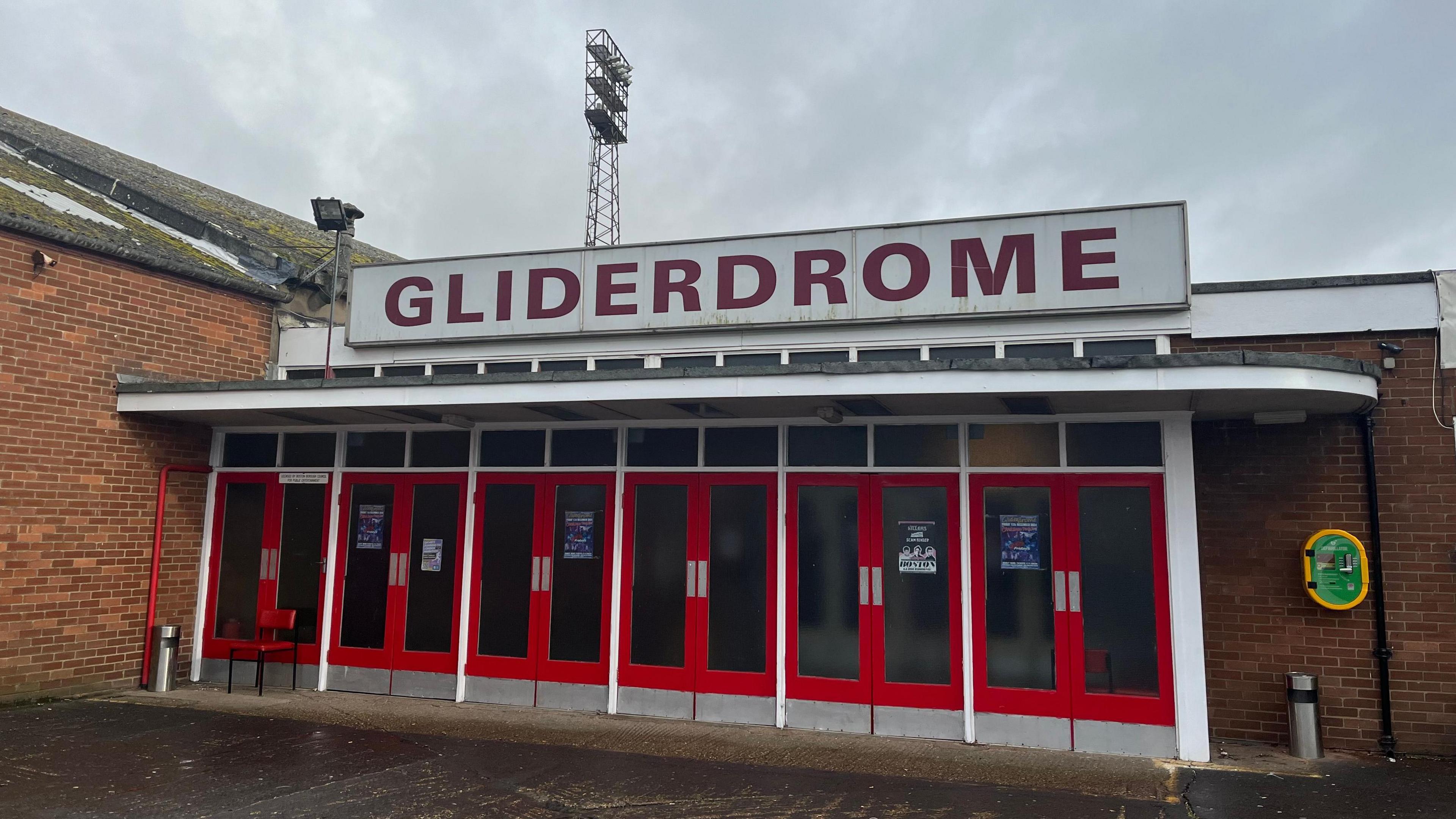
The Gliderdrome's roof needs replacing, says the owner
Mr Malkinson rubbed shoulders with some of rock music's greatest musicians while his father and uncle ran the venue in the 1970s.
"I can still remember the bands rolling up and rushing back from school trying to meet some of my heroes," he says.
"I was actually three months old, having my bottle, when Dusty Springfield came. That afternoon she fed me apparently."
From these vivid, personal recollections, it is clear this place is more than bricks and mortar - and Mr Malkinson is determined to do all he can to save it.
"It cannot go, it's got to be saved," he adds. "It's an integral part of not just Boston and Lincolnshire, but the country's musical heritage."
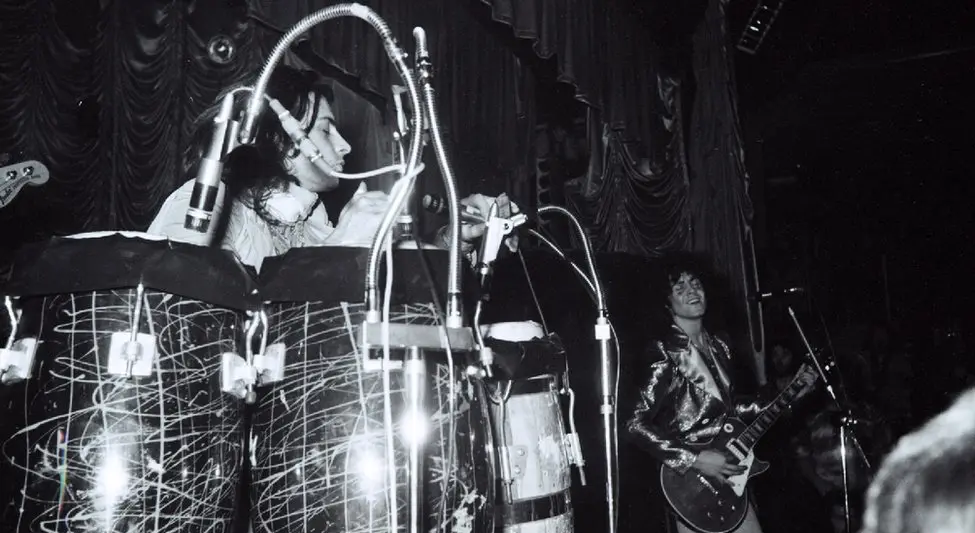
Marc Bolan & T-Rex are among the stars to grace the Gliderdrome's stage.
Gliderdrome began life as a skating rink in the mid 1930s. It soon made way for increasingly successful dances in the evenings.
Popular with servicemen based nearby, the dances began attracting notable names of the Big Band era but its golden age really began in 1964.
Part of the venue had burnt down and been rebuilt, with a newly christened dance hall called The Starlight Room.
It quickly began attracting huge names of the early days of rock 'n' roll and pop music.
Among its first acts after reopening were The Animals shortly after their hit, The House of the Rising Sun, made Number 1, Brenda Lee before Rockin' Around the Christmas Tree became Christmas Number 1 and Lola and You Really Got Me Going hit makers The Kinks.
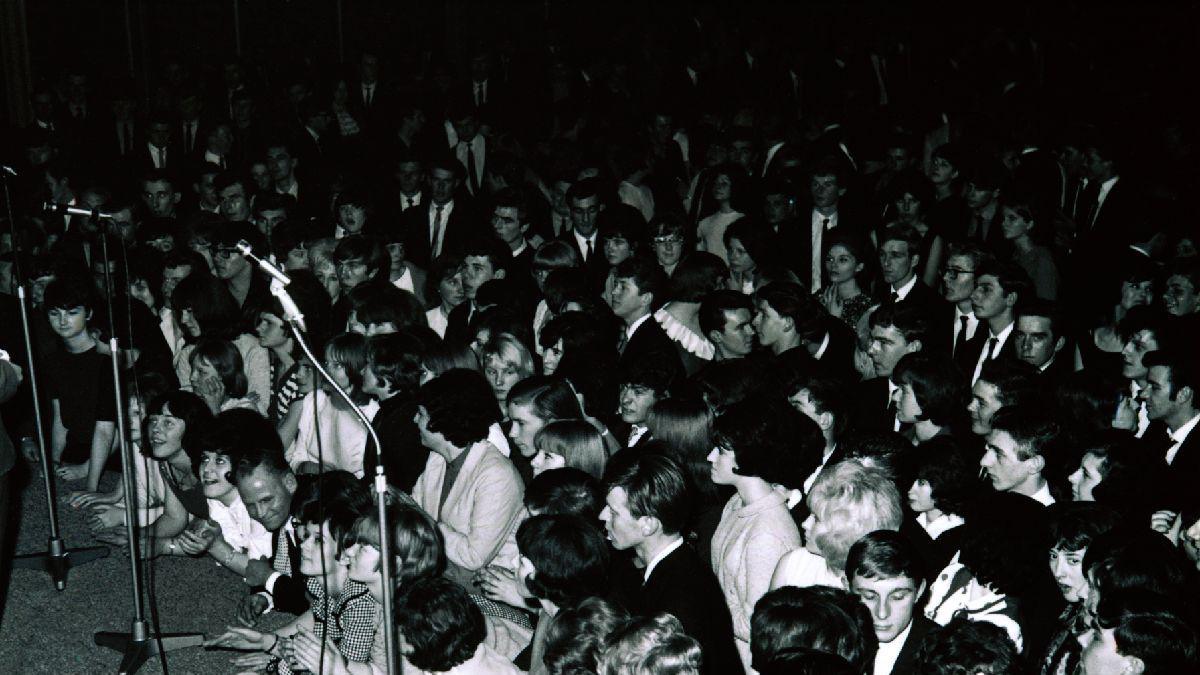
Crowds at the Gliderdrome in the 1960s
"Anybody and everybody played it," Dave Hill, the guitarist from Slade, told a BBC Sounds documentary.
Hill says fans were tenacious in their attempts to get hold of Slade lead singer Noddy Holder.
He recalls: "Nod appears to be on the floor. Fans are pulling him and he's trying to get his nails in to stop moving. They were trying to pull him off stage!"
Barry Whitwam, drummer for 60s beat rock and pop group Herman's Hermits, remembers it as "a massive place", adding: "Everybody played there. It was a great venue. The crowd were fantastic, really into rock 'n' roll."
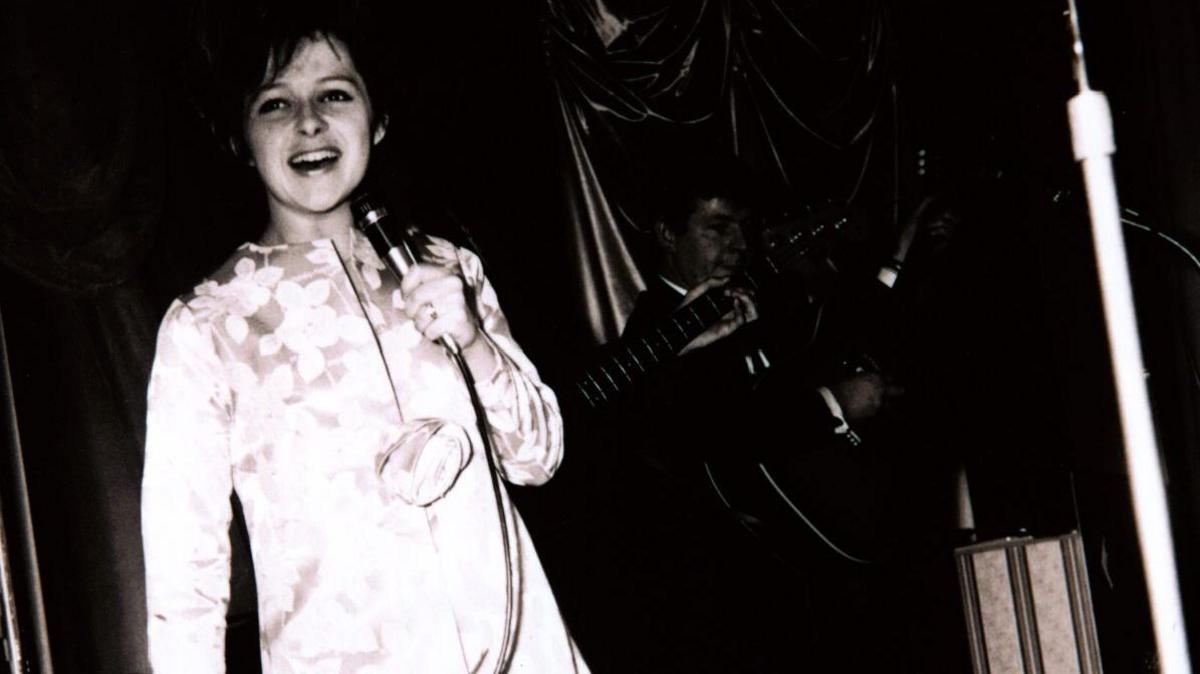
Brenda Lee performed at the Gliderdrome when she was topping charts with Rockin' Around the Christmas Tree
Mr Malkinson says the venue's proximity to the town's football ground meant he was the envy of his friends.
"I was having a kickabout on my own and Electric Light Orchestra were playing that night and they had a kickabout with me," he says.
"They gave me a load of 33s and 45 singles and stickers that meant nothing to me at the time... Wish I'd got them now!
"I can actually say I had a game of football with ELO."

Popstar Sandie Shaw performed at Gliderdrome before winning Eurovision in 1967 with Puppet on a String
In 1973, shortly after ELO's performance, Gliderdrome stopped booking artists.
Speaking in 2014, Nick Thompson, who worked there, blamed "unruly youth" and said much of his time was spent making repairs after gigs.
He said: "It just ran out of steam. Society changed, bands changed."
The venue became a bingo hall.
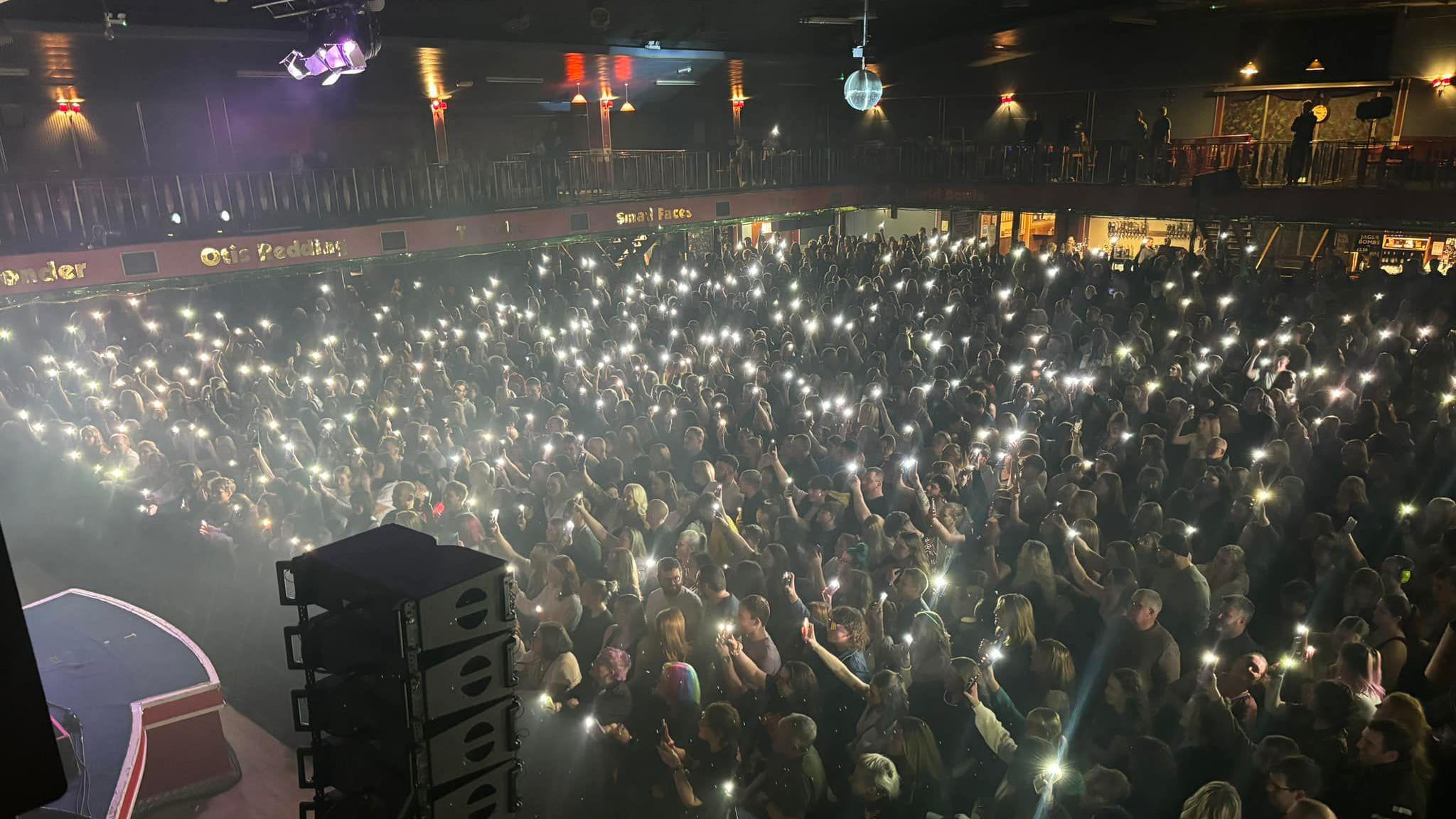
Scouting for Girls is one of the touring acts to have filled the venue in recent years
In recent years, owner Mr Malkinson has tried to return the venue to its former roots.
DJs playing music from bygone eras have inspired boogieing on the polished wooden floors once more.
Roy Stride, lead singer of Scouting for Girls, admitted he had "never even heard of Gliderdrome" when the band first played the venue in 2021.
"I fell in love with it instantly. It's such an incredible iconic venue. It's like a time capsule, like stepping back into history, to the beginnings of pop music," he said.
"It's as important to our musical heritage as [Paul] McCartney's childhood home, it really is a very special and unique place and it's one of the last left and it does need help. When it goes it's gone."
Rick Wakeman, keyboardist and composer from Yes and The Strawbs, describes himself as "a passionate Gliderdrome lover".
"It was the best atmosphere of anywhere I played, with any band," he says. "I had a soft spot since day one for the Gliderdrome. I still do.
"It should be saved. In 50 years people will go, 'why did we let that go?'"
Secret Lincolnshire: The Gliderdrome
The highs and lows of Boston's Gliderdrome.
Listen to the BBC Radio Lincolnshire documentary on BBC Sounds
Touring artists have also started making appearances on its stage.
Martin Kemp, from Spandau Ballet, Frank Turner, The Levellers and Enter Shikari have all had sell-out concerts at the venue.
"I think we are one of the oldest music venue's still going. I know there are older theatres than us, but it's an incredible feat that we're still going after all these years," Mr Malkinson says.
But he is realistic.
"It needs a new roof which would cost hundreds of thousands of pounds, probably close to a million quid," he says.
"It's just a constant battle to keep on top of it.
"Just look around at music venues that are closing or have closed since covid, it's a tough industry at the moment."
Listen to highlights from Lincolnshire on BBC Sounds, watch the latest episode of Look North or tell us about a story you think we should be covering here, external.
Related topics
- Published1 October 2024
